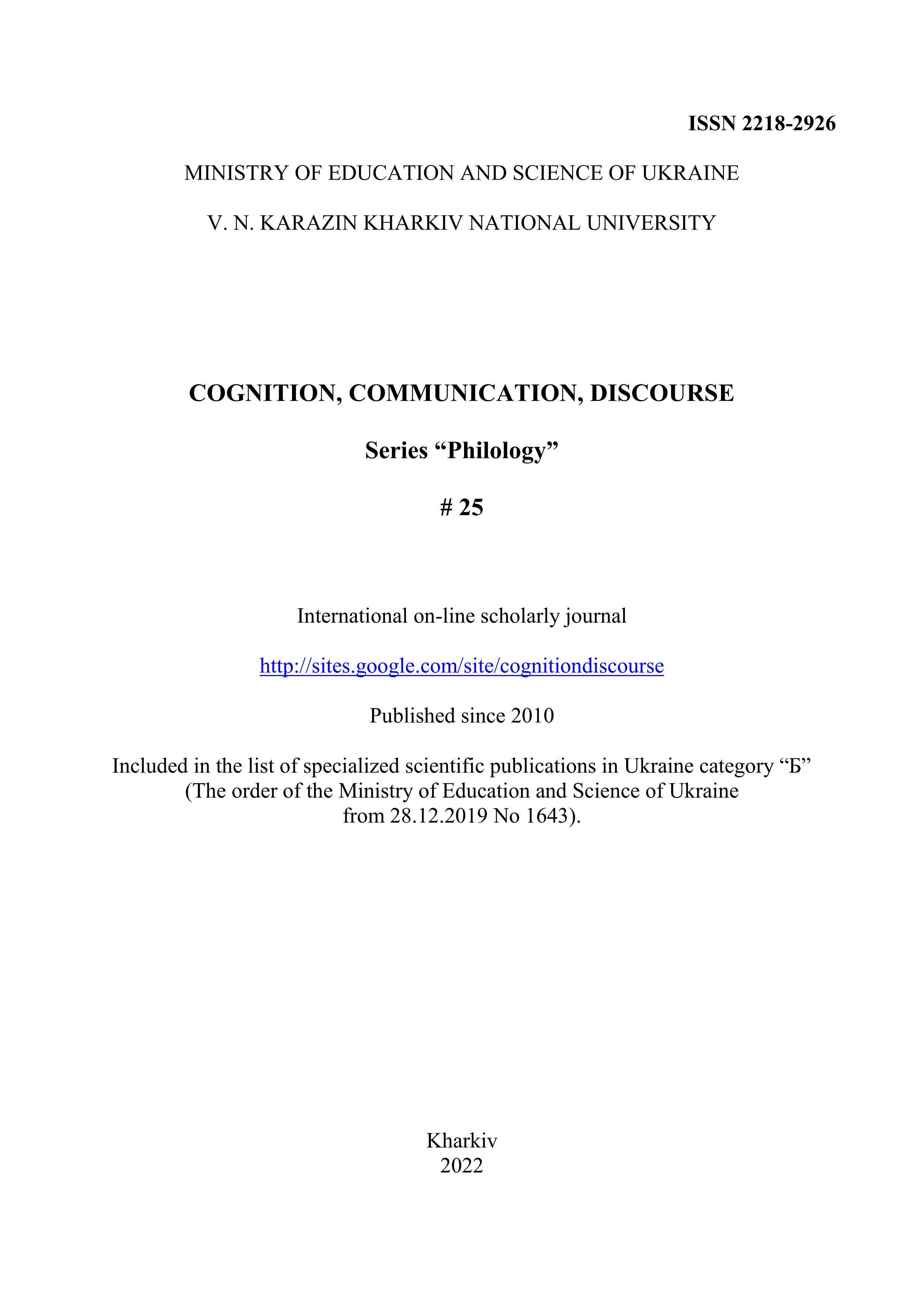Multimodal imagery in picture books for children
Abstract
This research focuses on revealing visual means of creating imagery in picture books, addressed to a child-reader. The theory of J. Appleyard has been acknowledged. It is believed that in early and later childhood children realize themselves as players, heroes, and heroines of the stories. Given that, visual imagery contributes to their reading experience and creates special world, which attracts child-readers. The theory suggested by G. Kress and T, van Leeuwen, supplemented by C. Painter, J. Martin, and L. Unsworth has been developed and amplified. Social distance, proximity, attitude, and contact in picture books for children are created by means of visual devices, i.e. color and saturation, page layout, close up and long-shot depiction. It is assumed that the most prominent means of creating meanings in picture books for children becomes the focaliser’s viewpoint, as in most narratives for children a child or an anthropomorphic character of a child’s age is a focaliser of the events. It is claimed that close-up depiction of images creates a special eye contact with the reader, as well as color decisions become visual means of creating the point of view of the focaliser. Furthermore, full-length pictures become a visual tool of implementation ironic senses. In ironic narrative for children, the incongruity is shaped via visual depiction of the characters, which builds the contrast between conventional understanding of issues and their representation in narratives for children. Proximity and distance of the images implements social and psychological connection, status or misunderstanding between the characters. Special angle of viewing the images serves as a device of revealing the type of the narrator of the story, as oblique and high angle become a tool of narrating a story by an adult narrator.
Downloads
References
Arizpe, E., & Styles, M. (2016). Children reading picturebooks: Interpreting visual texts (2nd ed.). London and New York: Routledge Taylor & Francis Group.
Fludernik, M. (2002). An introduction to narratology. London and New York: Routledge. Taylor & Francis Group.
Hunt, P. (Ed.). (2005). Understanding children’s literature (2nd ed.). London and New York: Routledge Taylor & Francis Group.
Kress, G. & van Leeuwen, T. (2006). Reading images: The grammar of visual design (2nd ed.). London and New York: Routledge Taylor & Francis Group.
Nikolajeva, M., & Scott C. (2000). The dynamics of picturebook communication. Children’s literature in education, 31(4), 225–239.
Nodelman, P. (2005). Decoding the images: How picture books work. In P. Hunt (Ed.), Understanding Children’s literature (pp. 128–139). London and New York: Routledge Taylor & Francis Group.
Nørgaard, N. (2010). New perspectives on narrative and multimodality. In R. Page (Ed.), Multimodality and the literary text: Making sense of Safran Foer’s ‘Extremely loud and incredibly close’ (pp. 115–126). New York, London: Routledge Taylor & Francis Group.
Nørgaard, N. (2018). Multimodal stylistics of the novel: more than words. New York and London: Routledge Taylor & Francis Group.
Painter, C., Martin, J., & Unsworth, L. (2012). Reading visual narratives: Image analysis in children’s picturebooks. UK: Equinox Publishing Ltd.
Tsapiv A.O. (2020). Poetics of narrative of the anglophone literary texts for children (Unpublishes thesis for a doctor of sciences in philology degree) V. N. Karazin Kharkiv National University, Kharkiv, Ukraine.
Copyright (c) 2022 Alla Tsapiv

This work is licensed under a Creative Commons Attribution-NonCommercial-NoDerivatives 4.0 International License.
Authors, who publish with this journal, accept the following conditions:
The authors reserve the copyright of their work and transfer to the journal the right of the first publication of this work under the terms of the Creative Commons Attribution License (CC BY), which allows other persons to freely distribute a published work with mandatory reference to the authors of the original work and the first publication of the work in this journal.
Authors have the right to enter into separate additional agreements for the non-exclusive dissemination of the work in the form in which it was published by this journal (for example, to post the work in the electronic institutions' repository or to publish as part of a monograph), provided that the link to the first publication of the work in this journal is given.
The journal policy allows and encourages the authors to place the manuscripts on the Internet (for example, in the institutions' repositories or on personal websites), both before the presentation of this manuscript to the editorial board and during review procedure, as it contributes to the creation of productive scientific discussion and positively affects the efficiency and dynamics of citing the published work (see The Effect of Open Access).




